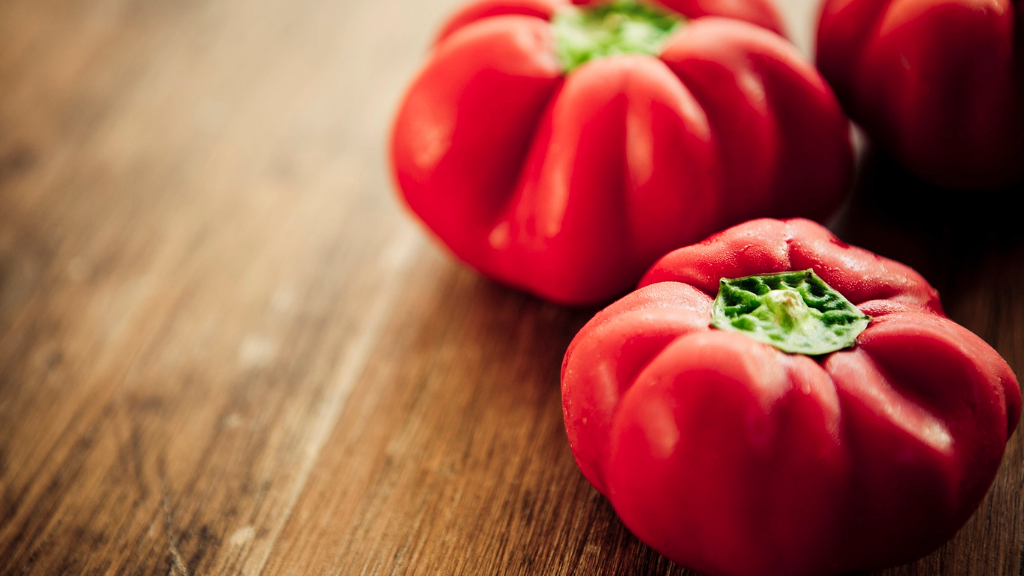Hungarian Tomato Pepper Plant Information


If you love peppers as much as most people do, then you've got to try your hand at growing a Hungarian tomato pepper. This heirloom pepper offers great taste and interesting tomato-looking fruits.
Tomato Pepper Info
We can thank a Hungarian immigrant for bringing a few tomato pepper seeds from home when he came to the United States sometime around 1912. Today, we know these hot little peppers as Hungarian tomato peppers, or Kalman's Hungarian peppers. Otherwise, Hungarian tomato pepper information is scarce, and the plant is considered an heirloom, which means it is no longer viable commercially and is relegated to small growers and heirloom plant enthusiasts. Luckily, seeds are still available from heirloom plant specialists who provide catalogs online. The beautiful, shiny green peppers turn deep red when fully ripe. The flesh is sweet and the heat is just high enough to keep things interesting. They are good for all those things peppers are good for, including sauces, salsa, soups, stews, pickling and canning. Although they are sometimes eaten raw, they are milder, meatier and juicier when cooked.
Growing Tomato Peppers
Growing Hungarian tomato pepper plants isn't difficult if you can provide at least six hours of sunlight per day and a long growing season with most days over 80 F. (26 C.). Start the pepper seeds indoors about six weeks ahead of the last expected frost in your area. Pepper seeds grow easily in a planting tray filled with a lightweight, well-drained potting mix. Plant about three seeds per inch and cover the seeds with no more than ¼ inch of potting mix. The seeds should germinate in a week or two. Thin the seedlings to one plant every two inches a couple of weeks after the seeds germinate. If the seedlings are growing fast, go ahead and transplant each seedling to a 4- to 5-inch pot. Let the seeds develop indoors until the temperatures are consistently above 60 to 65 degrees F. (15 to 18 C.), then be sure to harden the plants before moving them outdoors. Hungarian pepper tomato plants thrive in nearly any well-drained garden soil, but they do even better if you dig a few inches of compost or manure into the soil before transplanting. If you're short on space, the peppers will do fine in five-gallon containers. If you plant peppers more than one year in a row, be sure to rotate the crops to prevent bacterial diseases. As a general rule, don't plant peppers (or their cousins - tomatoes, potatoes or eggplants) in the same spot more than once every three to four years. Once the peppers are established, provide them with a liquid fertilizer every two to three weeks. Water the plants deeply once every week. Watch for aphids. If you notice the tiny green pests on the undersides of the leaves, spray the plants with insecticidal soap spray. Don't spray when the temperature is over 90 degrees F. (32 C.) or when the sun is directly on the leaves. If you stimulate blooming by harvesting the peppers as they mature, the plants will continue to produce until autumn.
Gardening tips, videos, info and more delivered right to your inbox!
Sign up for the Gardening Know How newsletter today and receive a free copy of our e-book "How to Grow Delicious Tomatoes".

A Credentialed Garden Writer, Mary H. Dyer was with Gardening Know How in the very beginning, publishing articles as early as 2007.
-
 My Homemade Orchid Fertilizer Always Brings More Blooms – Here's The Easy Recipe That Transforms Plants
My Homemade Orchid Fertilizer Always Brings More Blooms – Here's The Easy Recipe That Transforms PlantsScientist-turned-gardener Mary Ellen Ellis shares her tried-and-tested DIY orchid fertilizer recipe, plus more ingredients to try for healthy, happy plants.
By Mary Ellen Ellis
-
 Looking For Plants To Give You The Soft And Fuzzies? Try These 5 Fuzzy Leaf Plant Options
Looking For Plants To Give You The Soft And Fuzzies? Try These 5 Fuzzy Leaf Plant OptionsLovers of texture, drama, silver foliage and tactile plants will adore these special sensory garden additions. These fuzzy leaf plant options will leave you all aglow
By Susan Albert